Say goodbye to strawberry season: Dry weather continues to affect Northeast Ohio's farms
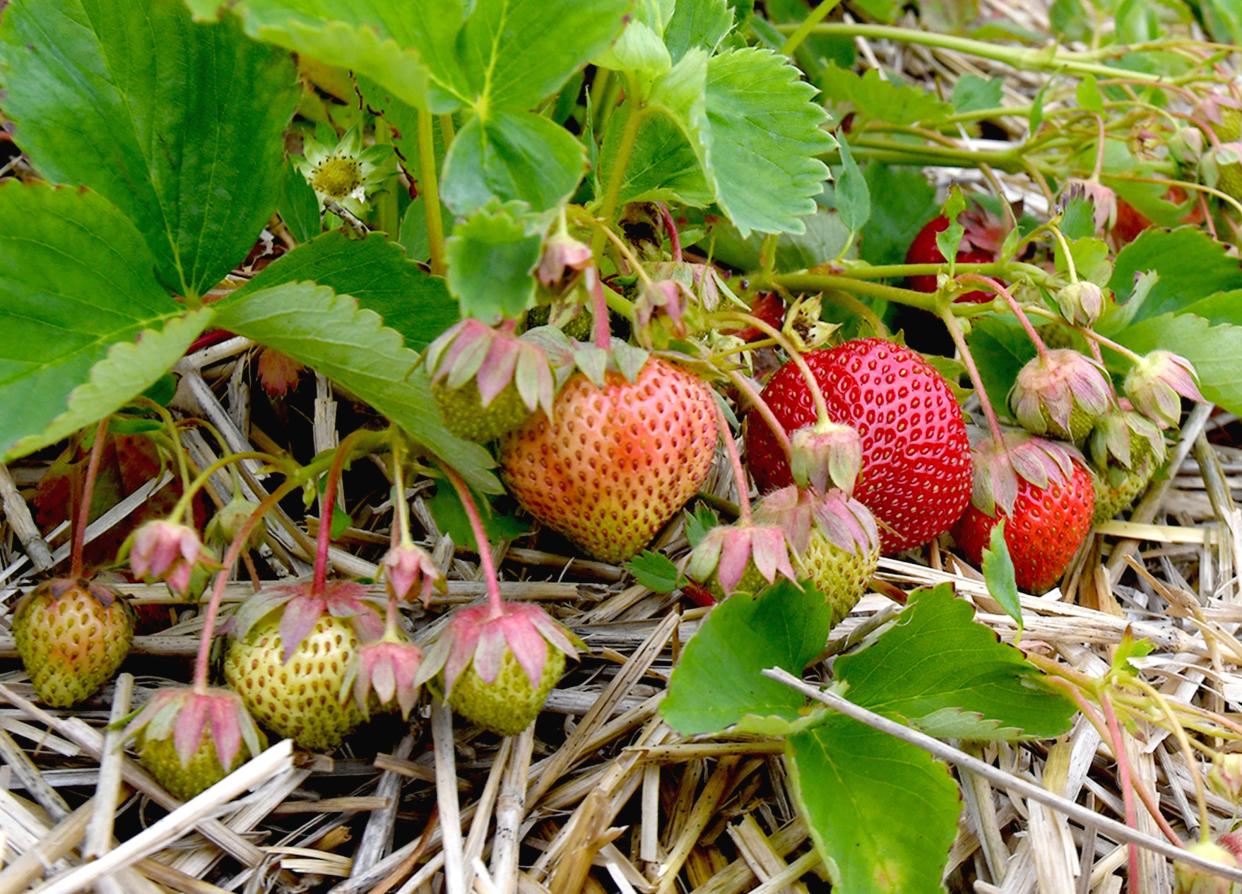
Though 2½ weeks without rain in Northeast Ohio has been perfect for those who like to lay out and enjoy the sun, for farmers and strawberry lovers, this dry spell may have damaging effects for crops and your favorite summer fruit.
According to the U.S. Drought Monitor, Ohio is in the D0 category, which means the area is "abnormally dry." The good news is there is a chance of rain for several days starting Sunday.
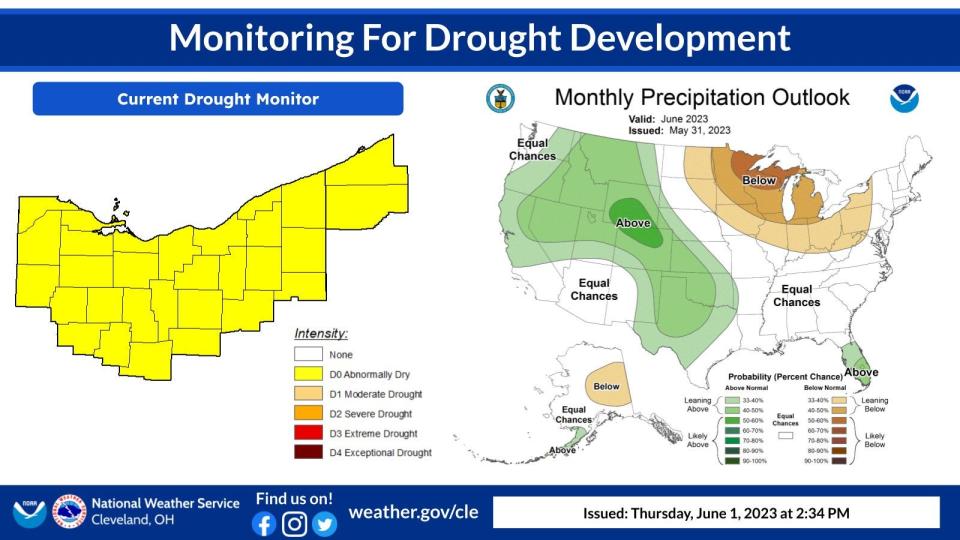
High pressures make for a dry summer
Kirk Lombardy, a meteorologist at the National Weather Service in Cleveland, shared insight on the Akron-Canton weather along with an explanation for the lack of rain.
"We haven't seen any rain here since May 20, which contributed about one-third of an inch of precipitation," Lombardy said. "When the heat rises drastically, the area becomes what we call a high-pressure system, forcing the storm systems in the area to move away from us."
In simple terms, a high-pressure system means weather that's dry with lots of sunshine. Lombardy explains the problem of this type of weather for farmers and the produce they rely on to make sales, especially in the early summer months.
"Rain is critical during this time of year. Farmers plant their crops in the spring and although the seed is planted, they need the crops to come up and grow," Lombardy said. "The heat with the lack of rain will make the crops relatively small."
Amanda Miller of Miller Farms in East Sparta said that she has been struggling to maintain her produce plants.
“Normally we would get more strawberries, but right now it has been so dry. It doesn’t matter how much I’ve been watering them now; they just haven’t been as good as in the past.”
Miller Farms in East Sparta Ohio sells predominately beef products. The hay and fresh produce that Miller grows is used to feed the livestock. At the end of a growing season, Miller sells excess produce, but this year, she fears she will not even have enough product to feel her own animals.
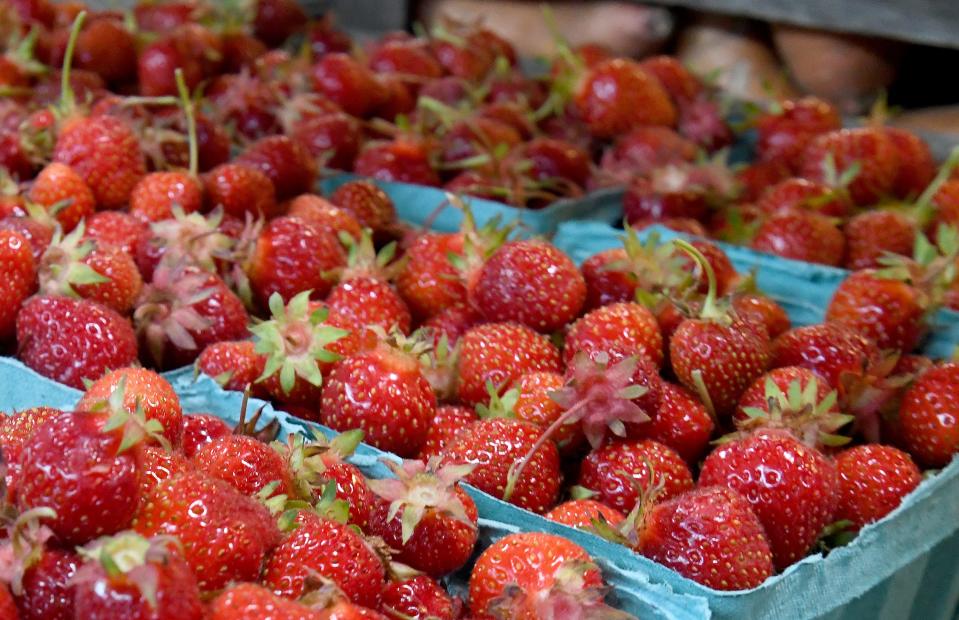
Slim pickings: Will we get any strawberries this season?
Strawberry season is upon us, but with no rain, the bright red berries are in jeopardy. Strawberries need at least 1 to 1.5 inches of rain weekly in order to grow efficiently, according to Pennington Seed Inc.
“In general, the dry weather is concerning. We need moisture,” said Bill Patterson the President of Ohio Farm Bureau. “The good bit of news that we have right now is the temperature cooled off, which is certainly helpful.”
Patterson operates Patterson Fruit Farm in Chesterland. Luckily, irrigation systems have been able to provide some farmers relief during the period of drought.
“We have been able to apply irrigation on a regular basis,” Patterson said. “Certainly, a nice, good rain we prefer over irrigation, but the reality is we have been able to give the berries the moisture they need.”
However, not all farmers have access to irrigation systems for all of their crops — making rain an invaluable resource.
Local farms are already seeing negative effects. Johnston's Family Farm in Valley View, for example, is warning customers there won't be any strawberries this season.
"Due to the hot, hot, dry weather that has a devastating effect on the berries, there will not be any strawberries for the ’23 season ... things are not looking good," an automated voicemail said.
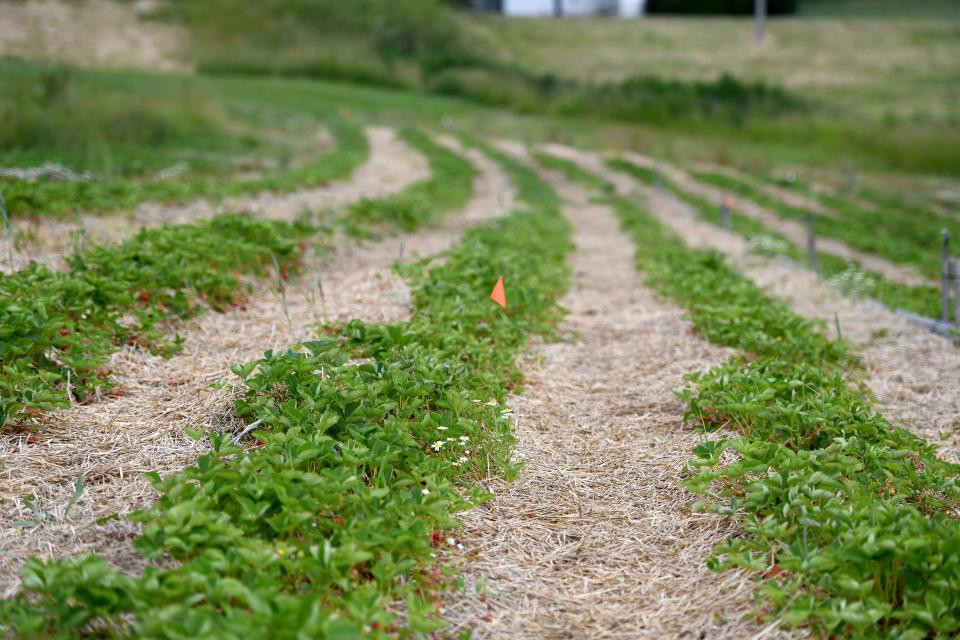
Moreland Fruit Farm in Wooster is experiencing the same challenges as Johnston's farm, notifying customers about the lack of strawberries.
"Due to the extreme dry weather, there will be no strawberries until further notice," Moreland Fruit Farm said in a voicemail.
Isaac Yoder, the owner of Sunny Slope Orchard in Tuscarawas County, said that his strawberry crops this year are only about 60% to 70% as large as the crop in years past. The number of ripe berries being produced is not equivalent to the demand of the fruit.
“For us, the quantity is affected,” Yoder said. “Every time we go out and pick there’s not enough berries that are red yet. We have berries every morning, but we run out every day."
With high hopes for the future, Yoder said, “The berries that ripen in late June are definitely going to be better.”
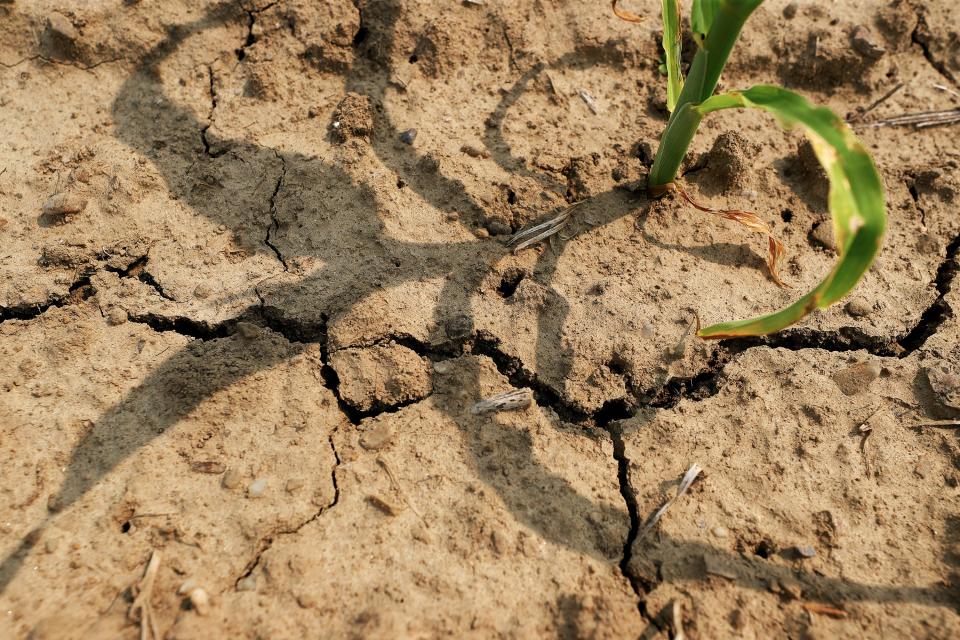
Lack of rain is creating 'a lot of extra labor'
Mike May of May's Produce is quite concerned about the produce he's planted within the past few weeks and what the lack of rain means for his farm.
The Atwater Township farm, which grows mostly vegetables, resembles a desert these days.
"We just had about 2,000 vegetables planted with plastic coverings over it, so the plastic does hold and retain some moisture," May said. "There's a lot of extra labor now, really old-school with large buckets of water ... my kids have been helping out with it."
May isn't new to the concept of having to do a little extra labor to water his produce, although that usually is not a problem until later in the season. For these early summer months, he finds it concerning.
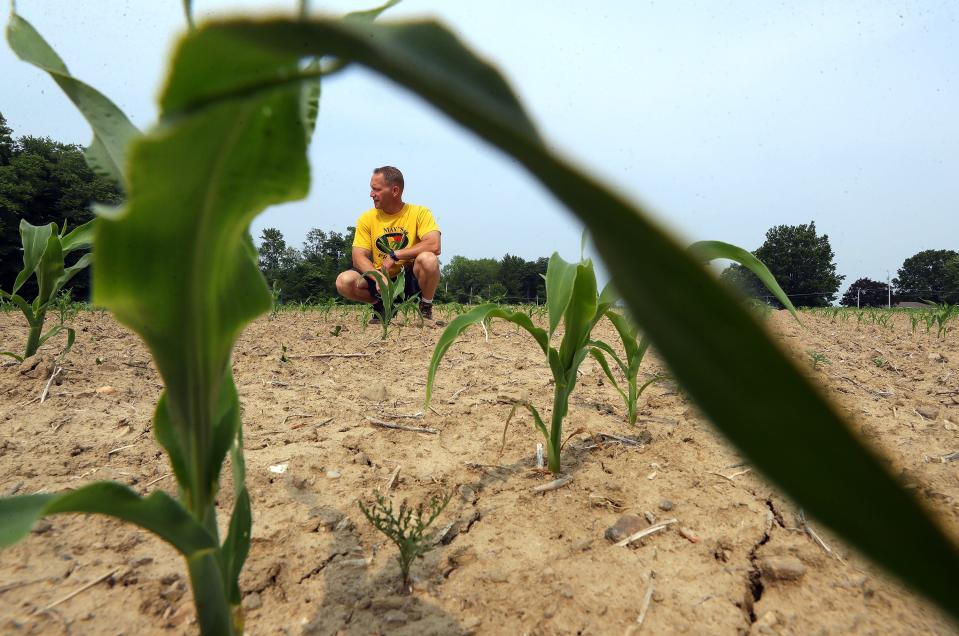
"It's a critical time right now for rain to come through so our produce can grow," May said.
May's Produce regularly takes part in many farmers markets throughout the region in Stow, Barberton and Canton, so growing and harvesting fresh and high-quality produce is a necessity.
It's a family-owned farm and is currently operated by three generations. For them, this is their life.
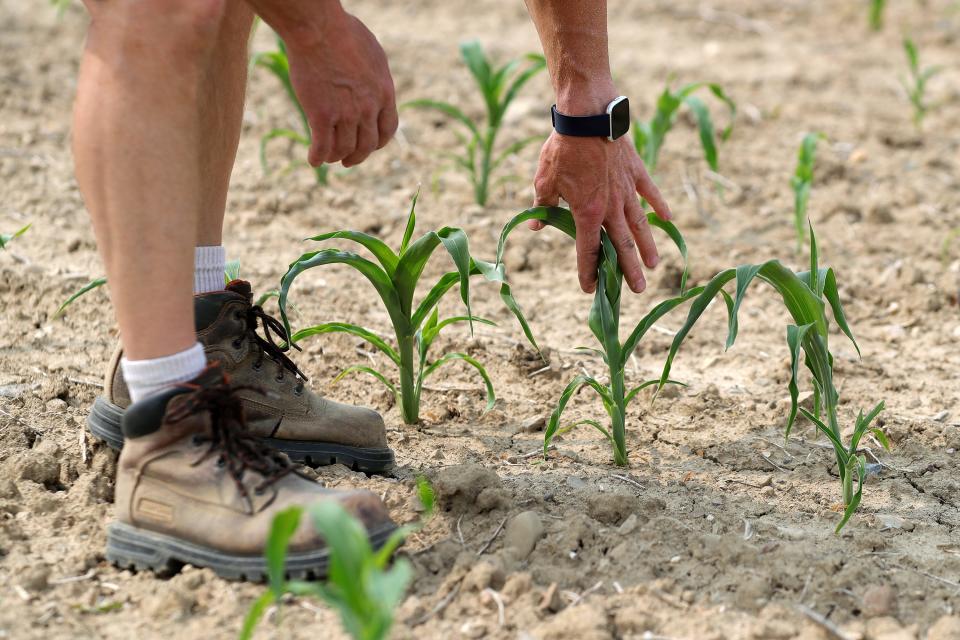
"I'm still optimistic about this season, but things will start having to change rather quickly, though," he said.
The famous drought of 1988
Although the season is not off to a great start with the dry weather, Ohio has seen summers much worse.
In the summer of 1988, Ohio experienced its worst drought. There were 40-plus days recorded with little to no rain with temperatures averaging in the 90s. The drought impacted farms throughout Ohio and the Midwest, where farmers suffered tremendously and lost most of their crops.
The drought caused about $10 billion in losses and, in turn, created a severe decrease in farms in North America.
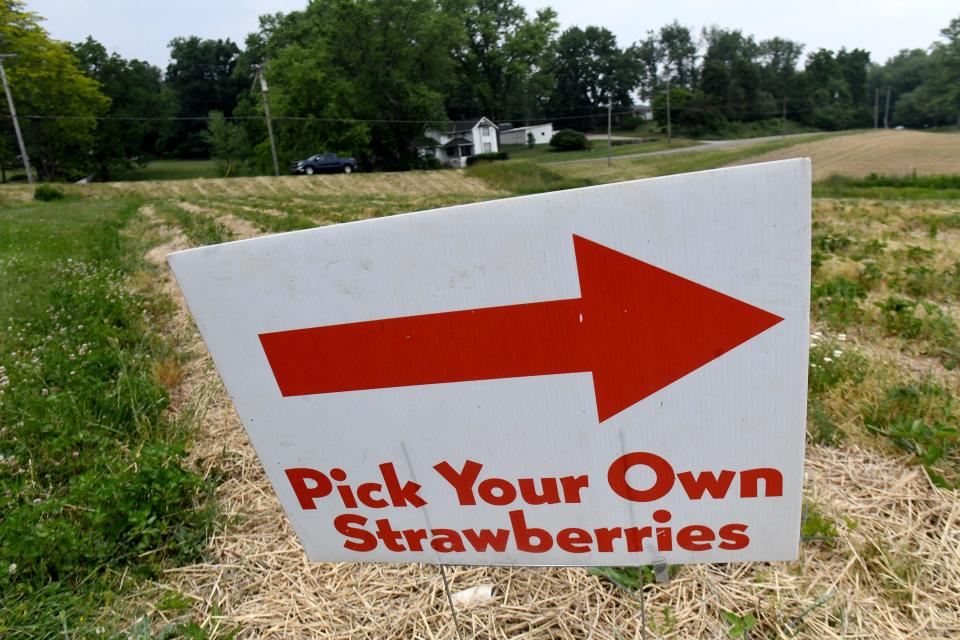
Is history repeating itself?
The short answer: No.
Farms and meteorologists are optimistic that this extended period without rain is only temporary and are looking forward to rainy days ahead.
Lombardy says the next chance of precipitation is Saturday night into Sunday morning, with a possible half-inch of rain.
April showers bring May flowers ... so, hopefully June showers bring July berries?
Includes reporting by Canton Repository staff writer Abreanna Blose.
This article originally appeared on The Repository: Lack of rain puts 2023 Northeast Ohio strawberry season in jeopardy

